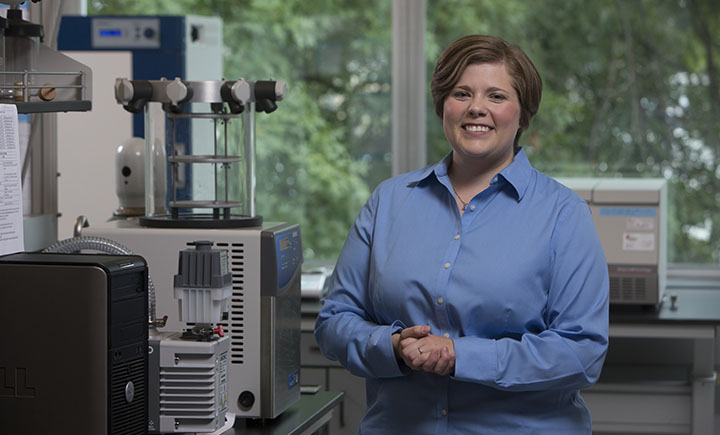How nanoparticles break down biofilm
Biomedical engineering’s Amber Doiron and biology’s Karin Sauer are working on an NIH funded study that pits nanoparticles against biofilm.

As a discipline, engineering has a unique opportunity to work across the various scientific fields. That’s something researchers at the Thomas J. Watson School of Engineering and Applied Science appreciate, and those researchers are using the resources at hand to reach across disciplines for their work.
One such example is the new, collaborative study between biomedical engineering and biological sciences. Research assistant professor Amber Doiron from the Biomedical Engineering Department is working with professor Karin Sauer from the Biological Sciences Department.
Their study received a one-year National Institutes of Health (NIH) R56 grant of $292,146.
“Our study is looking at biofilm infections,” explained Doiron. Biofilms are a group of microorganisms that stick on a variety of surfaces and can have medical relevance.
For example, the plaque on your teeth is a type of biofilm and it can cause tooth decay. While a dentist can remove plaque, it’s not always so simple.
“Biofilms can be on medical devices, in the lungs of patients with cystic fibrosis or on nonhealing wounds,” said Doiron.
While biofilms are not always dangerous, their pervasiveness means that these biofilms have a unique opportunity to carry infections. In fact, the National Institute of Health has reported that more than 80 percent of bacterial infections are caused by biofilms.
Doiron and Sauer have developed nanoparticles that contain an enzyme to break down the biofilm.
So why are the nanoparticles so effective? While they are extremely small, they have a large surface area that gives them more surface to interact with and break down the biofilms.
“These nanoparticles adhere to the biofilm and cause it to disaggregate,” said Doiron. “After that, we can let the normal antibiotics do their job.”
Once the biofilm has been removed, the infection can heal.
The study is still in process but the results are already proving useful to infection prevention.
